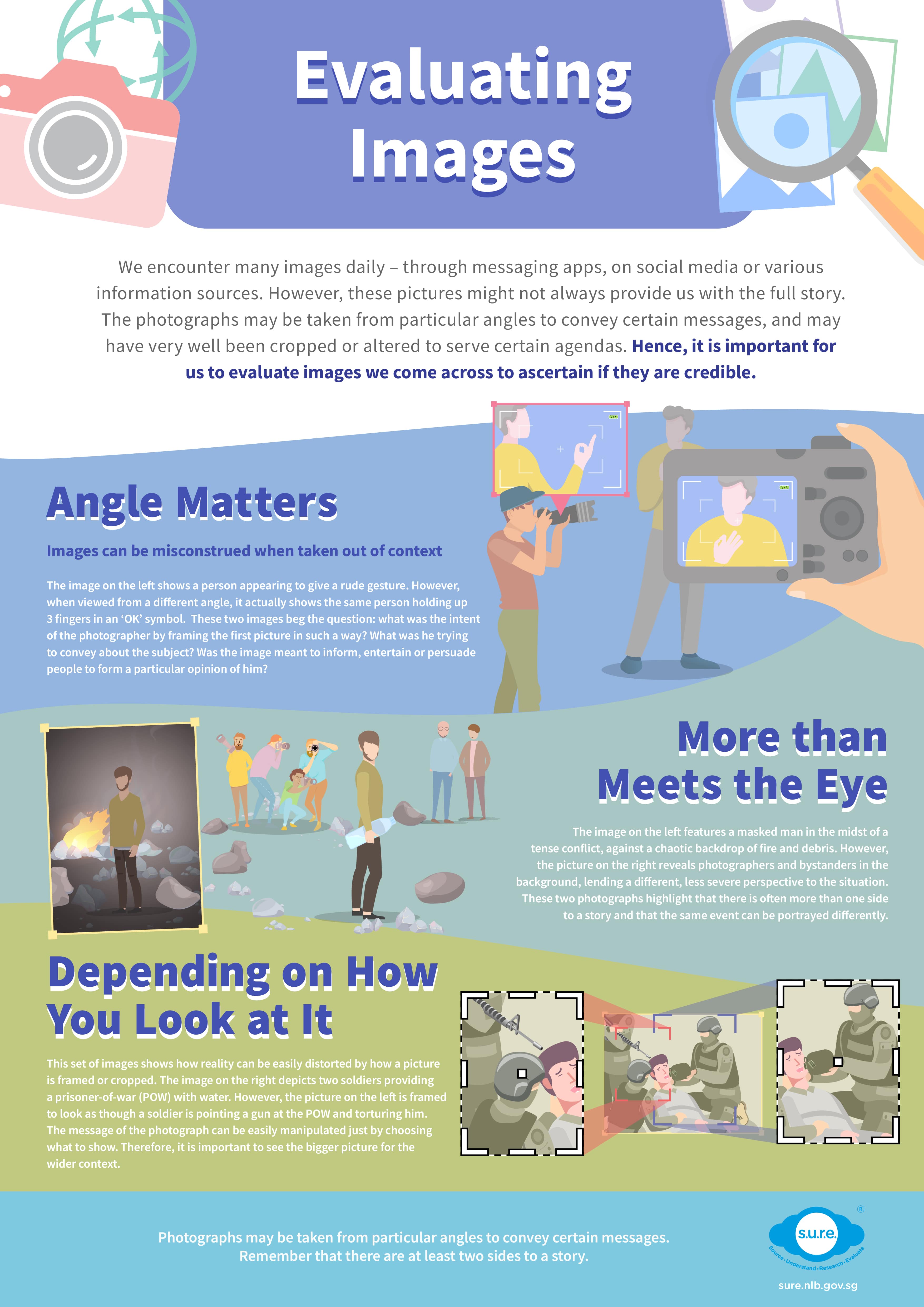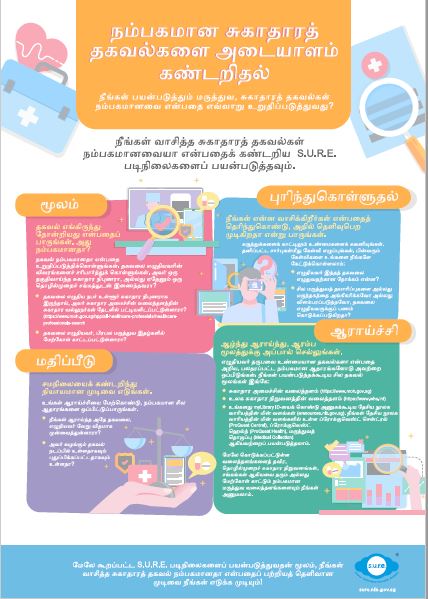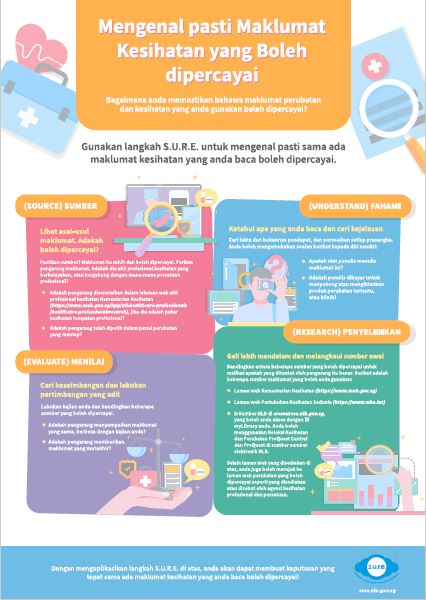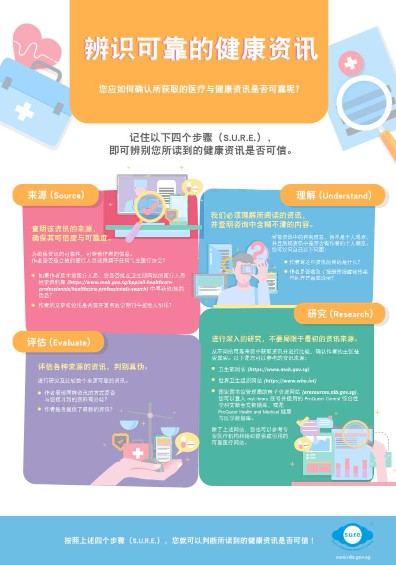Information Literacy

-
News Literacy (infographic)
Click HERE to view the full infographic.

-
Identifying Credible Health Information (Tamil)
-
Identifying Credible Health Information (Malay)
-
Identifying Credible Health Information (Chinese)
-
Identifying Credible Health Information
How do you ensure that the medical and health information that you consume is reliable?
Use the S.U.R.E. steps to identify if the health information you read can be trusted.
Download the PDF version HERE.
This infographic is also available in Chinese, Malay and Tamil languages.
Source: Look at the origins of the information. Is it trustworthy?
Make sure that the information is credible and reliable. Check the author of the information. Is he or she a qualified healthcare professional, or affiliated to any professional association?
- Is the author listed in the Ministry of Health website’s Healthcare Professionals Search,if he or she is a local healthcare professional?
- Has the author been cited in established medical journals?
Understand: Know what you’re reading and search for clarity.
Look for facts rather than opinions, and question personal biases. You can ask yourself the following questions:
- What is the intention of the author for writing this information?
- Is the author paid to endorse or advertise certain medical products, or a clinic?
Research: Dig deeper and go beyond the initial source.
Compare between multiple reliable sources to see if what is being claimed by the author is true. Here are some sources of information that you can use:
- Ministry of Health website
- World Health Organization website
- NLB’s eresources, which you can access with with your myLibrary ID. You can use ProQuest Central and ProQuest Health and Medical Collection in NLB’s eresources.
Other than the websites provided above, you can also refer to credible medical websites such as those provided or cited by professional health agencies and associations.
Evaluate: Find the balance and exercise fair judgement.
Do your research and compare a few reliable sources.
- Has the author presented the same information differently from your research?
- Is the information provided by the author current and up to date?
By applying the S.U.R.E. steps above, you will be able to make an informed decision on whether the health information that you read is credible!

-
Evaluating Images
We encounter many images daily – through messaging apps, on social media or various information sources. However, these pictures might not always provide us with the full story. The photographs may be taken from particular angles to convey certain messages, and may have very well been cropped or altered to serve certain agendas. Hence, it is important for us to evaluate images we come across to ascertain if they are credible.
Angle Matters
Images can be misconstrued when taken out of context. The image on the left shows a person appearing to give a rude gesture. However, when viewed from a different angle, it actually shows the same person holding up 3 fingers in an ‘OK’ symbol. These two images beg the question: what was the intent of the photographer by framing the first picture in such a way? What was he trying to convey about the subject? Was the image meant to inform, entertain or persuade people to form a particular opinion of him?
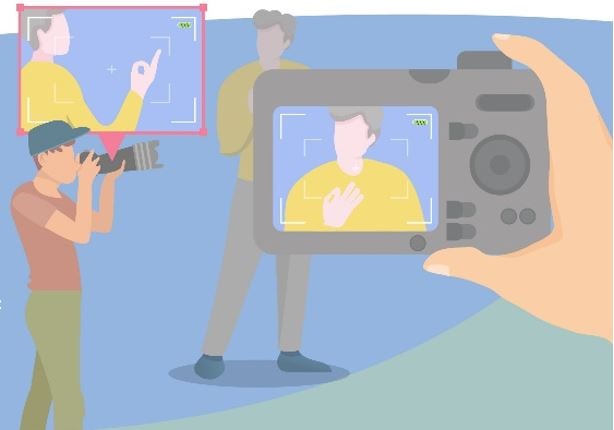
More than Meets the Eye
The image on the left features a masked man in the midst of a tense conflict, against a chaotic backdrop of fire and debris. However, the picture on the right reveals photographers and bystanders in the background, lending a different, less severe perspective to the situation. These two photographs highlight that there is often more than one side to a story and that the same event can be portrayed differently.

Depending on How You Look at It
This set of images shows how reality can be easily distorted by how a picture is framed or cropped. The image on the right depicts two soldiers providing a prisoner-of-war (POW) with water. However, the picture on the left is framed to look as though a soldier is pointing a gun at the POW. The message of the photograph can be easily manipulated just by choosing what to show. Therefore, it is important to evaluate any image that you come across.
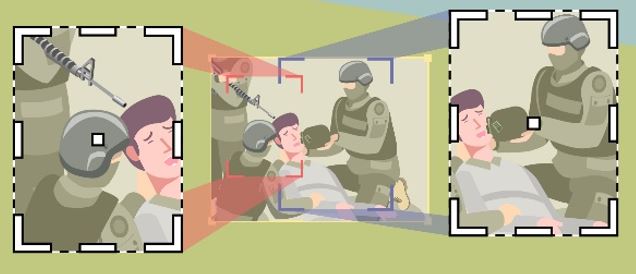
Download the complete infographic HERE
